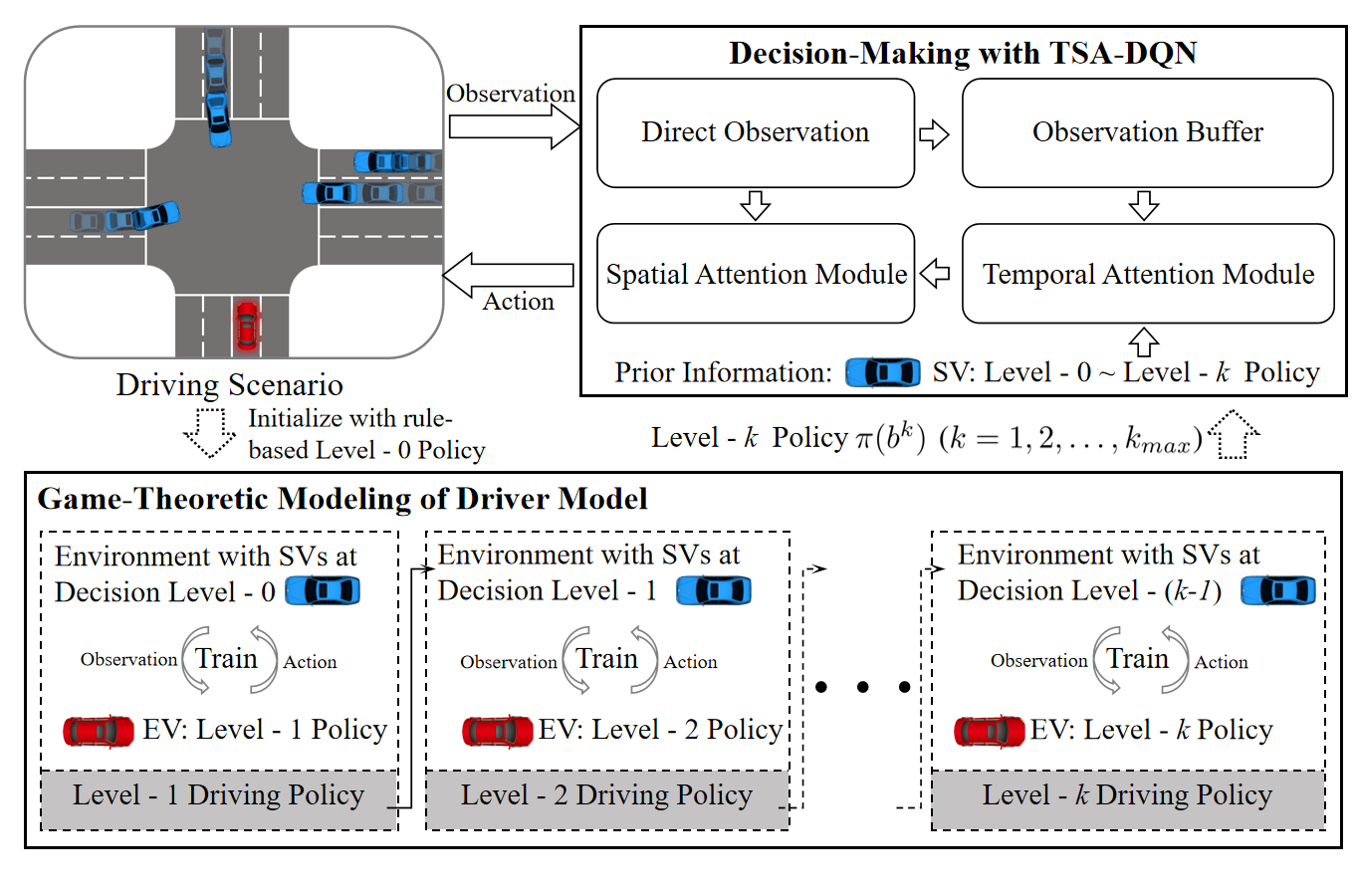Game-Theoretic Driver Modeling and Decision-Making for Autonomous Driving with Temporal-Spatial Attention-Based Deep Q-Learning
Published in IEEE TRANSACTIONS ON INTELLIGENT VEHICLES, 2024
Abstract
The safe and efficient navigation of autonomous vehicles in complex traffic scenarios remains a significant challenge. One of the key impediments is the limited effectiveness of current methods in constructing driver models for surrounding vehicles (SVs) that capture diverse decision-making abilities. As a result, implementing decision-making algorithms for the ego vehicle (EV) based on such models could result in unfortunate accidents due to misinterpretation of the decision-making of SVs. To deal with this problem, this paper first introduces a novel decision-making framework that incorporates a game-theoretic driver model based on level-k reasoning. For the SVs, driver models at different decision levels are established with an iterative level-k reasoning algorithm. As supported by rigorous proof, the strategies of SVs corresponding to these driver models converge to the Nash equilibrium. Following this, utilizing these driver models characterized by mixed decision levels, we propose a temporal-spatial attention-based deep Q-learning (TSA-DQN) algorithm to approximate the optimal policy for the EV and generate respective decisions in various scenarios. It is noteworthy that the proposed algorithm leverages a temporal attention network to estimate the decision level of SVs and spatial attention mechanisms to generate decisions while capturing the interactions between vehicles. Simulations are conducted in representative traffic scenarios, and the results reveal that the proposed driver model based on level-k game theory effectively captures the behaviors of diverse drivers. On this basis, the proposed TSA-DQN algorithm demonstrates superior performance over several deep reinforcement learning (DRL) baselines in terms of success rate, efficiency, and safety in driving tasks. Furthermore, the TSA-DQN algorithm is deployed to the real-world hardware platform to illustrate its effectiveness and practical feasibility.
Overview

